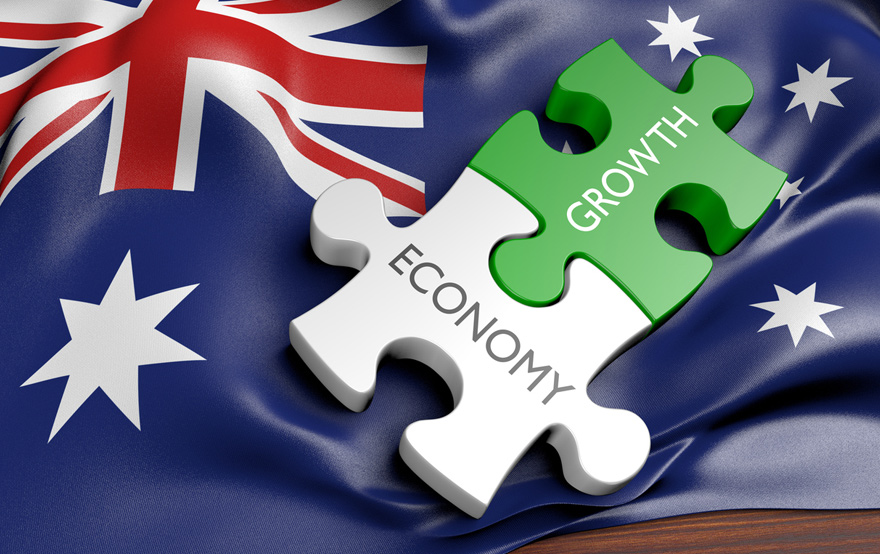Low for longer downunder

Interest rates around the world have fallen to new extraordinary lows. At present, there are a record $US15 trillion worth of government, corporate and other bonds trading at negative interest rates. The European Central Bank has just cut its policy rate to a new record low of -0.50%, while the Bank of Japan’s policy rate is -0.10%. The US ten-year bond is trading at 1.80% and the German ten-year bund trades at -0.50%. Only a few years ago, these interest rates would have seemed unthinkable. Today they are reality.
How did we get here? The short answer is that the world has excessive saving relative to the amount of investment. High saving reflects a range of factors, including aging populations, high debt levels, which encourage deleveraging, and uncertainty about the future. Lack of investment also reflects a range of factors, including economic uncertainty, particularly given rapidly changing trade policies and geopolitical risks.
In turn, lack of investment is weighing on global economic growth, which is slowing and pushing down global inflation, which is low. Faced with these challenges, which have recently become more acute, central banks have once again started to loosen settings, by lowering their (already low) policy rates.
With this backdrop, HSBC’s fixed income analysts expect global interest rates to stay very low for a considerable period of time. For example, the fixed income team recently noted that it expects US ten-year bonds to not stray far from around 2.0% out to 2025. Rates are set to stay ‘low for longer’.
This has profound implications for Australia.
First, if interest rates remain low or fall in other major economies, this puts pressure on the Reserve Bank of Australia to cut its policy rate. If it did not, this would put upward pressure on the Australian dollar, weighing on local growth and inflation. Given that local growth is already below trend and inflation is below the RBA’s target band, the central bank has already cut the cash rate to a new record low of 1.00%. The global rates backdrop, as well as escalating global trade tensions and geopolitical risks, mean that we expect the RBA to cut again soon, to 0.50% by early 2020.
Second, low for longer interest rates have significant implications for Australian households and businesses. Mortgage rates are likely to fall further. This should boost household incomes for borrowers, which should support a pick-up in consumer spending. At the same time, deposit rates are also at new record lows, forcing those who rely on deposits for income to reassess portfolios, cut back on spending or seek alternative sources of income.
The net effect of lower interest rates boosts overall household incomes, because there is twice as much household debt as there are deposits, but it is also clear that lower rates redistribute income from deposit-holders to borrowers.
Of course, interest rates for businesses have also fallen. In principle, this should encourage more investment and hiring. However, the key question is whether the main constraint on businesses activity is uncertainty about growth prospects, geopolitical and local policy risks. If this is the case, it is not clear than even lower interest rates will make much difference to the business sector's outlook.
However, if businesses can be confident that rates are going to be low for a long period, they should be able to demand lower rates of return from investment plans – that is, they should lower their 'hurdle rates'. If they do, a pick-up in investment and continued strong growth in hiring would support economic growth.
Third, low interest rates support asset prices, such as housing, equity and commercial property assets. The RBA’s recent cuts, combined with some easing in prudential settings, have already seen a pick-up in housing prices over the past couple of months. To some degree, this is positive. However, at the same time, rates that are lower for longer increase the risks of misallocation of capital. If the housing market continues to pick up, it may not be long before the prudential authorities are once again seeking to tighten their policy settings on lending standards. To the extent that rising equity prices just reflect an expectation of low interest rates, rather than rising profits, higher equity prices could also be worrisome.
Fourth, and most profoundly, as the RBA moves its cash rate to a near-zero level, the central bank will run out of room to move its cash rate to effectively manage the economic cycle. For decades, Australian’s have got used to the RBA having a powerful economic tool, in the form of the cash rate that it could raise and lower, having a large effect on the economy. This world may now be changing.
If the RBA needs to do more to support growth, beyond cutting the cash rate to near zero, it may rapidly run out of palatable options. It can consider making the cash rate negative, but the evidence is not clear that this helped much elsewhere. The RBA could buy government bonds, or other assets, in what are referred to as 'unconventional policy' options or 'quantitative easing' (QE). But these policies and their efficacy are untested in Australia. In short, monetary policy is set to be less powerful than it has been.
However, at the same time, low for longer interest rates significantly bolsters the government’s power to use fiscal policy. The Federal and state governments can now borrow at record low interest rates for long periods of time. All governments in Australia can currently borrow for less than 2% for ten years.
Such low interest rates should reduce the hurdle rates on government reform projects. The focus should be spending on infrastructure, but could also include the reform of tax, health and education policy.
Low for longer has arrived in Australia and it implies a significant rethink about how the economy works, and how households, businesses and governments spend and invest.
This article first appeared in The Australian newspaper on 23 September 2019.